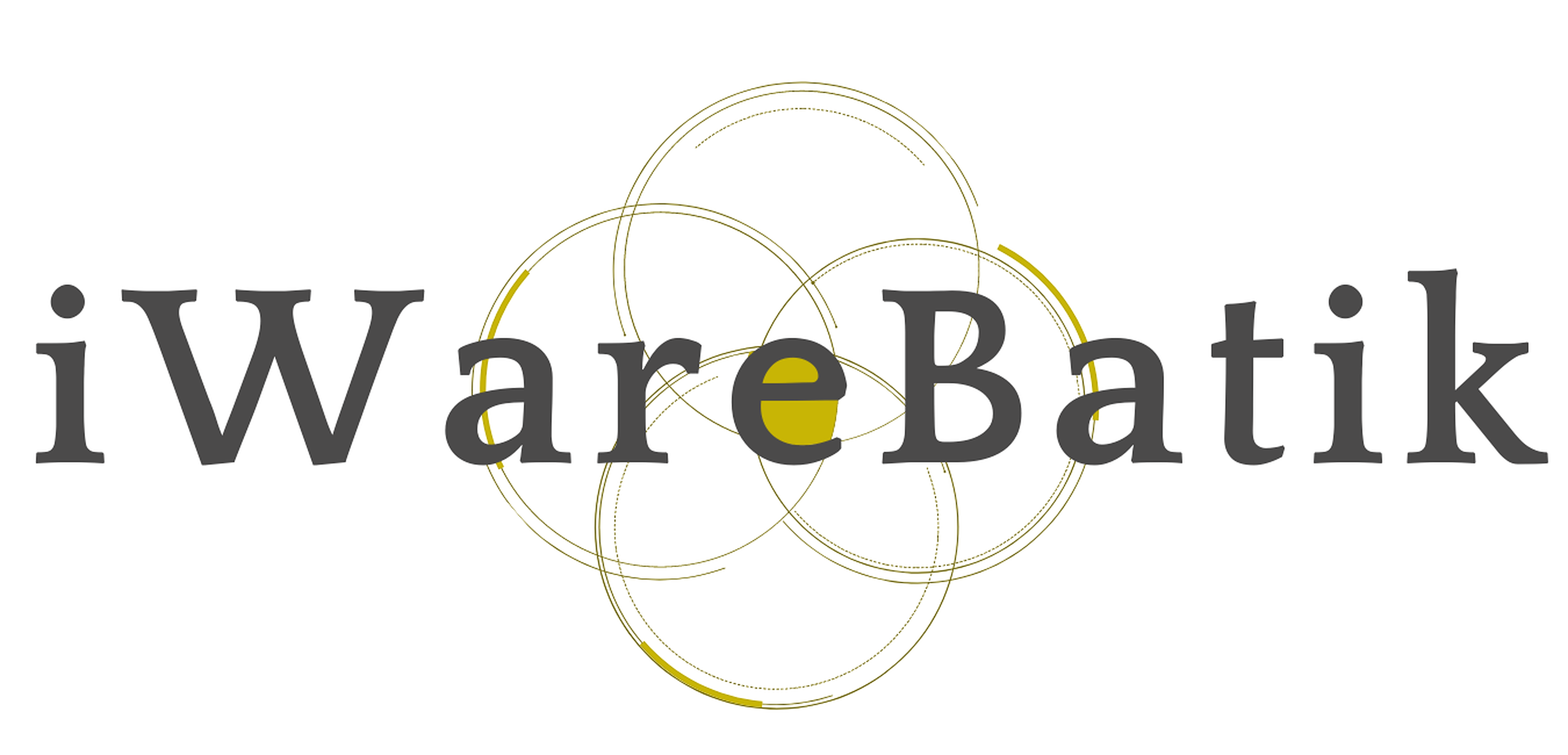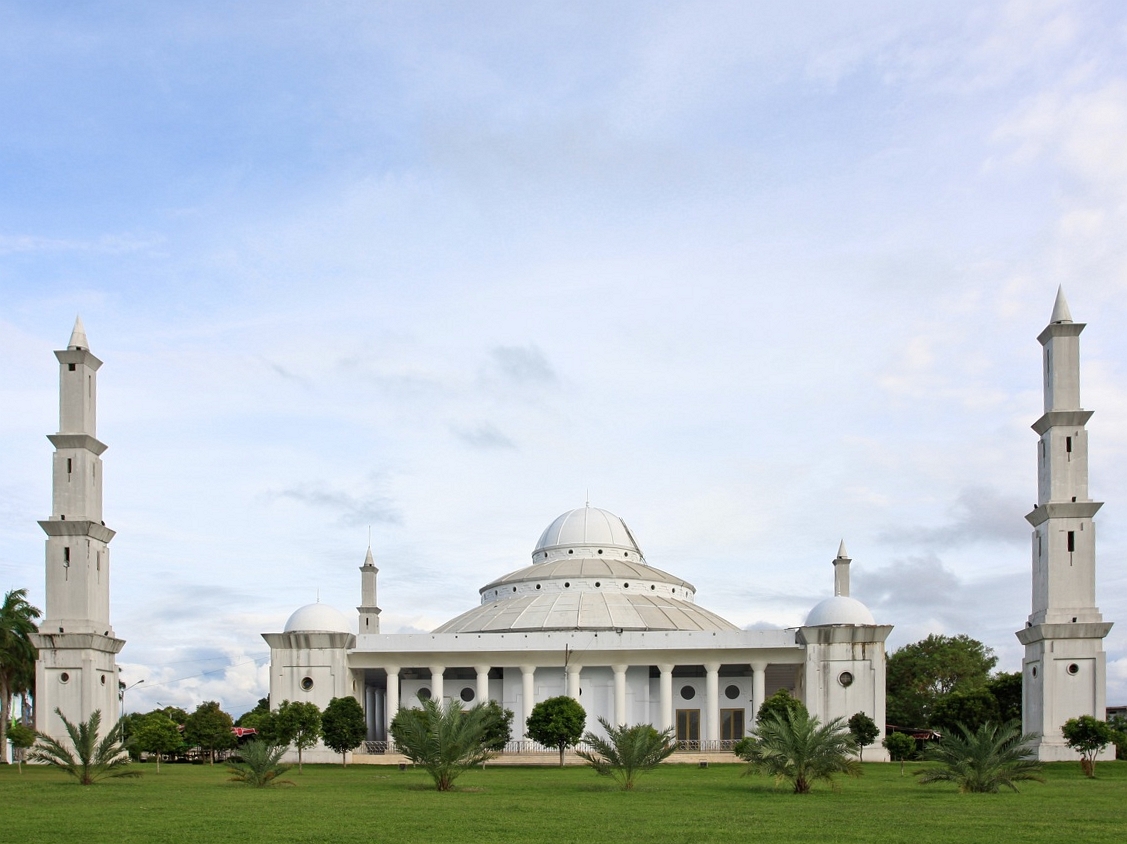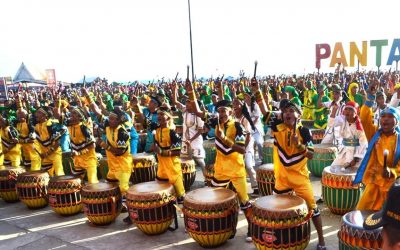Home / Batik Regions – Western Indonesia – Southern Sumatra – Bengkulu / At Taqwa Grand Mosque
Cultural Destination
Embrace the spirit of the place!
At Taqwa Grand Mosque
Bengkulu also offers spiritual tourism with historical nuances. One of the famous mosques in this region is the Grand Mosque of Akbar At-Taqwa Bengkulu. This colonial-styled mosque is located near the home of the first President of Indonesia, Sukarno, when he was exiled during the Dutch colonial era. Its park is quite spacious and designed with a vintage and classic style with a garden in the courtyard of the presidential palace.
Tourist Attractions in Bengkulu
Tabut Festival
Bengkulu regional government holds annual the Tabut Festival that takes place in
Fort Marlborough
Fort Marlborough in Bengkulu was once built by the British colonial era during
Bengkulu
Batik Motifs
Kaganga Tanah Rejang
If Batik Besurek combines Arabic calligraphy motifs, then the Kaganga batik takes
Besurek Rembulan
This batik illustrates praise for God who created the wonderful universe
Besurek Rafflesia
The term “Basurek” refers to a textile that contains letters or inscriptions
Discover
Indonesian
Batik
Motifs
Raja Ampat
Raja Ampat motif represents the marine life at Raja Ampat archipelago in
Gentala Arasy
Built as high as 80 meters, the tower also highlights the historical side of
Merak Ngeram
The hatching peacock motif has a very deep meaning which refers to the sacrifice and
Karawo Pinang
Pinang refers to the Palm areca tree. This motif is considered as the original
Prada Papua
The word “Prada” in the Javanese-Indonesian dialect means a batik textile that
Biji Kopi
The coffee seeds motif illustrates the pride of local coffee specialities in
Rumah Mamuju
the Batik motif illustrates the house of Mamuju King with the stairs, located on the left of the wooden stage house
Gajah Way Kambas
The motif illustrates the Lampung’s natural reserve, the Way Kambas. it also symbolizes
Pucuk Rebung Riau
Pucuk Rebung symbolizes heart determination in achieving goals, good luck, and
Jupri Kembang Teh
Kembang Teh illustrates the tendrils of tea plants that grow in the highlands of
Sido Mulyo
Sidomulyo is one of the classical motifs, which is specifically used for the bride’s costume in
Awan Berarak
Awan Berarak is a combination of Dayak motifs and Malay patterns. The word ‘Awan Berarak’ means the
Burung Bidadari
Bidadari birds are endemic birds in Halmahera. This motif represents an
Bekantan Pakis
This motif represents Pakis Haji (Polystichum setiferum), an endemic plant in
Gonggong Siput
Gonggong (Strombus Turturella) is one type of sea snail found around
Hiu Taliyasan
Indonesia is also home to the world’s largest fish, the whale shark (Rhincodon typus). Hiu Taliyasan refers to
Keluak Daun Pakis
The word “Keluak” is a Minang language which means twisted or tangled. The Motif of
Gamolan
This motif illustrates Gamolan, a bamboo musical instrument of Lampung that is
Durian Pecah
Broken Durian motifs depict the foundation of faith. The second half signifies the mastery of
Taiganja
Taiganja is a precious gold pendant that shows the social status of the Kaili family. It is
Honai
The Honai is inspired by the traditional house of the Papuan community living in
Bintik Tujuh
The Bintik Tujuh (Seven Dots) motif has 7 white spots and green color gradation as
Ukir Sentani
The Ukir motif is a batik motif that is inspired by various traditional Sentani wood carvings
Angsa Duo
According to legend, the Angso duo batik motif is a pair of swans that are believed to have led Princess
Tanah Liek
The word “Tanah Liek” refers to clay in Minang language. It is also known as
Tifa Totobuang
The batik motifs illustrate Maluku’s traditional music instrument called
Gigi Haruan Lidi
The Gigi Haruan Lidi motif is taken from the name of the cork fish and is a symbol of
Buketan Bali
The Balinese bouquet (Buketan Bali) is a floral arrangement and the name is
La Galigo
La Galigo is a literary work of the Buginese Epic that has 300 thousand epic lines. It is considered even
Teguh Bersatu
This batik motif shows the strength of the people of Kupang. It also represents a sense of
Daun Simpor
This motif is inspired by the Simpor plant (Dillenia Suffruticosa) which is a typical
Besurek Rembulan
This batik illustrates praise for God who created the wonderful universe
Daun Sirih
This motif illustrates betel leaves that are used by Lombok communities as traditional
Lok Baintan Floating Market
As you can imagine, the most authentic thing is that you can buy things and even
Gorga Simeol-Meol
The Gorga Simeol-meol is a pattern of plant tendrils. it is regarded as a symbol of longevity and
Tengkawang Ampiek
With its many advantages, the Dayaks use this leaf in ritual ceremonies. This plant is a symbol of
Sandeq
Sandeq Boat is a symbol of the maritime importance of the West Sulawesi region. The greatness of
Enggang Dayak
Local people beliefs that hornbills are an incarnation of the Commander of the Birds. It has supernatural
Pinawetengan
The Pinawetengan Batik pattern was taken from a prehistoric inscription in
Gonggong Beruntun
This motif illustrates that a person should maintain a positive attitude and
Manguni Minahasa
Manguni is identified as the symbol of the Minahasa people. Manguni is known as a
Ake Patra
Ake is related to the divinity and the composition of the universe. It is a symbol of
Tabir Tanjung
Tanjung flower is a type of Cherry tree flower, which is commonly found in
Tampuk Manggis Sasirangan
The motif illustrates the philosophy of the mangosteen fruit, which is
Wirasat
Wirasat or divine inspiration is a gift from God. This inspiration is symbolized by
Singayaksa
The Singayaksa motif comes from the name of a place where Sultan Hasanuddin used to
Parang Rusak
Another meaning behind this motif is an unconquerable spirit, symbolized by
Srimanganti
The name of the Srimanganti motif is derived from Palace’s hallway that connects to
Kaganga Tanah Rejang
If Batik Besurek combines Arabic calligraphy motifs, then the Kaganga batik takes
Pati-Pati Pinehiku
It symbolizes the hierarchy in society and the social status of the Mekongga
Kuda Kupang
Horses symbolize wealth. It contains noble values of virtuous characters that bring
Ikan tambal
The word “Ikan” refers to fish. The philosophical meaning of Ikan Tambal means is
Tubo Kelapa
Coconut tree is a symbol of a good character and strong mentality. It illustrates the more success a person, the more
Tikar Natuna
The Tikar Natuna motif is adapted from the traditional making of pandanus mats in
Paqbarre Allo
The word “Barre” means round and “Allo” means the sunlight. This motif is interpreted as
Salakanagara
Salakanagara batik motif illustrates the first kingdom in the Betawi land
Gumin Tambun
Based on Hindu mythology, this motif symbolizes lucks, abundant wealth, and
Leuit Sijimat
This motif reflects the daily activities of the Baduy tribe in Banten. The main ornaments of batik motif consist of:
Kerawang Tegak Aceh
The Vertical Upright (Kerawang Tegak) Motif symbolizes a person who has a strong
Wakatobi
It symbolizes the coastal beauty of the Wakatobi island and the symbol of Patra symbolizes
Kawung
The Kawung motif was created by Sultan Agung Hanyokrokusumo (1593 – 1645) as a symbolic gift for
Daun Lada Hitam
The black pepper motif represents the main commodity of Bangka Belitung
Sero Tangga
The Sero Tangga illustrates an endearing feeling and sacrifices of a person to fulfil
Sekomandi
Its philosophical meaning is the eternal union which refers to a saying “until death do us part”
Besurek Rafflesia
The term “Basurek” refers to a textile that contains letters or inscriptions
Rangkiang
The word “Rangkiang” refers to the rice granary in the Minangkabau language. It symbolizes
Pattimura
Pattimura is the name of an Indonesian hero who fought against colonialism in
Pohon Hayat (Tree of Life)
The Batik motifs in Lampung are dominated by the acculturation of Buddhist and
Kasih Tak Sampai
‘Kasih Tak Sampai’ is an idiom in the Indonesian language which refers to
Lipaq Sabe
Lipaq Saqbe contains a simple geometric classical motif with various flower decorations. This textile is
Pala Salawaku
This motif illustrates the unique weapons of the Maluku region, namely



